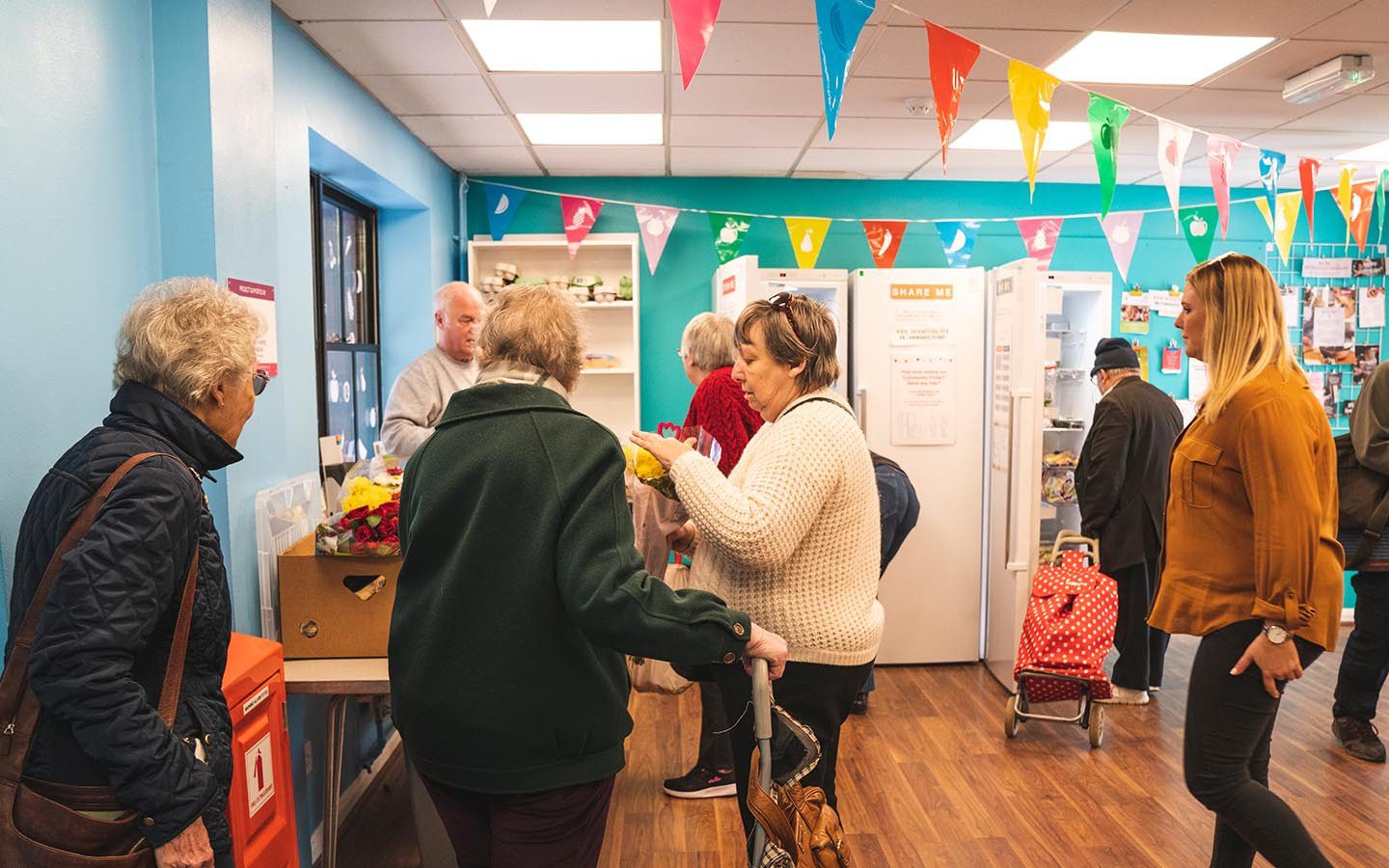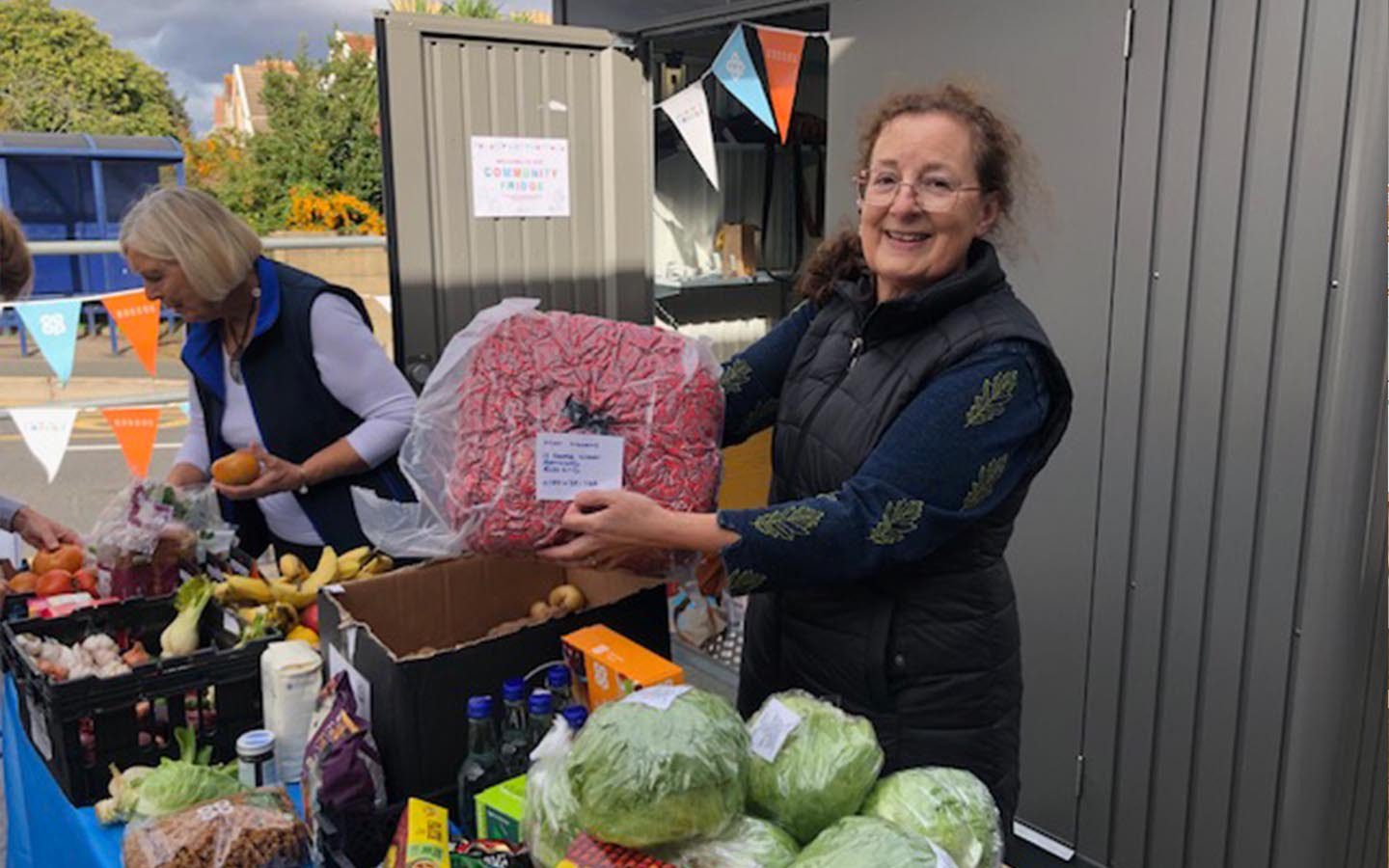Creating your space
You've taken the leap into setting up a community fridge! Now, it's time to shape the physical and logistical elements of your project. Here, we'll dive into the physical space that you’ll host your fridge, any important equipment, and how to make it accessible.
Where should we put our fridge?
Community fridges can live in all sorts of buildings and structures. Depending on the space and facilities you have available, consider the following:

For any location you’ll need to consider security, lighting and power, accessibility, cost and insurance requirements.


What should we buy?
You don’t need to have everything you need right from the start, it's often better to begin with the essentials and expand gradually as your fridge develops. This stops you from buying things you might not need and allows you to adjust to the changing needs of your community. You should start by thinking about:
Fridges and freezers: Depending on the type of food you'll share, you might need more than one fridge or freezer. Hubbub used to offer a discounted option through Liebherr, but sadly we're no longer able to offer this. Depending on your budget you might want to look locally or online for the best option. Many groups prefer a glass fronted standing fridge (as they’re pretty to look at and can show your visitors what food is inside) but these can be expensive. For insurance purposes you’ll need to check that any fridge is PAT tested. Fridges purchased brand new should be, but it's important to double check. Going forwards, it's good practice to have your electrical equipment PAT tested annually or biannually. Refer to Health and Safety Executive for more guidance.
Tables and shelves: You’ll want shelving and tables to store items which don’t need to be put in the fridge.
Scales: You’ll need a way to measure the weight of the food that comes in and out of your fridge. This helps you keep track of how much food is being shared, which will help you keep track of the impact you’re having.
Posters and signage: Our designers have created editable posters and stickers you can use to bring your fridge to life. They help explain what a fridge is (for any new visitors), how it works and instructions for use.
Catering to your visitors:
When choosing a location for your community fridge, consider its accessibility and the comfort of visitors. The ideal space should be:
Welcoming and Neutral: Ensure it's located in a neutral, safe environment.
Step-free: This helps make it easily accessible to everyone, especially those with mobility challenges.
Well-Signposted: Use clear posters or signs to guide visitors directly to the fridge.
Spacious: Ensure ample space around the fridge to accommodate pushchairs and those with mobility aids.
Ventilated: A well-ventilated space is essential for comfort and safety.
If space is limited, think about restricting the number of people entering at any one time to avoid overcrowding and maintain a pleasant environment.
Additionally, your opening days and hours are crucial. These will differ from one fridge to another, but it's vital to think about how your chosen timings will affect your visitors. For instance, do you plan to open on weekends, or will you operate only during the daytime?
Whichever you opt for, clear communication is key. Display your operating hours prominently at your location (you might find our opening hours poster useful) and update them online, including our map and any other relevant websites or social media channels. This ensures visitors can effortlessly determine when they can drop by.
Top tips
Speak with your local fridge: Connect with community fridges near you for insights on setup and expenses.
Scale wisely: Costs vary based on size and features, from minimalistic setups to lavish ones – we suggest starting small and building slowly.

FAQ
It depends on the size of the community you're serving and the expected food donations. However, starting with a standard commercial-sized fridge is advisable, and you can expand as the demand grows.
The frequency can vary based on the community's demand, but on average, most community fridges are restocked once or twice a day. Here's a good example of where visiting a nearby fridge can help - they'll be able to talk you through their operations based on their size and number of collections/ visitors.
While any durable commercial fridge will do, it's helpful to check with other community fridges for their recommendations. Energy-efficient models can also help in saving operational costs.
Sadly, we no longer offer discounted fridges - this is something each fridge will need to do independently.
While the idea is community-centered, always ensure you have the required permissions from local authorities or property owners. It's also important to consider safety and accessibility.
Many community fridges start small and grow over time. There are lots of ways you can cover your costs, check out our guide on funding and income.
Encourage locals to volunteer for fridge setup, maintenance, or decoration. Workshops, brainstorming sessions, or community voting on fridge design/themes can also increase involvement.
Yes, it's essential to have liability insurance in place. This covers potential accidents or issues that might arise from the use of the community fridge.
Want to dig deeper?
Intro to community fridge guide

